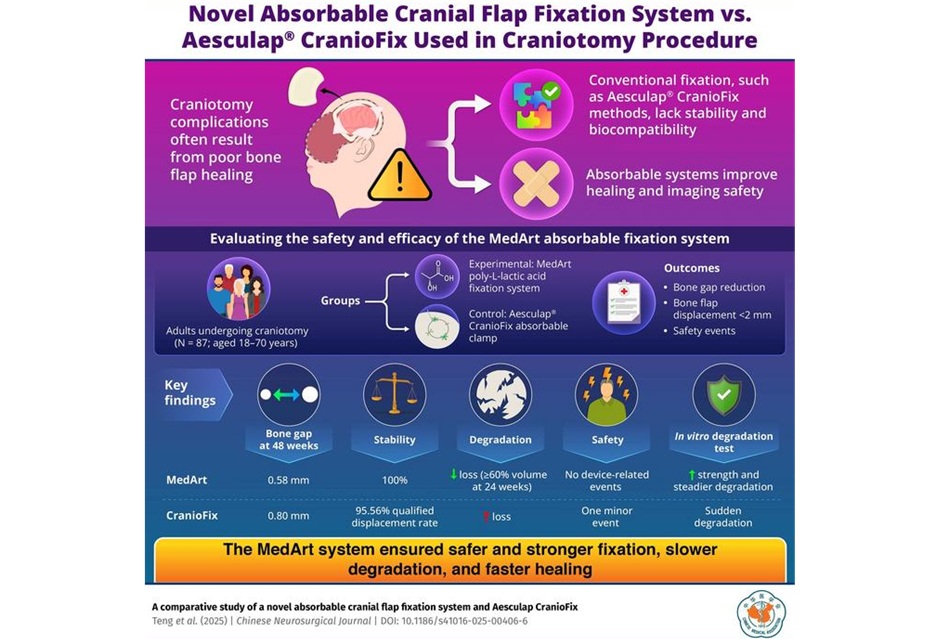Majority of IV Infusion Errors Linked to Clinical Practice
|
By HospiMedica International staff writers Posted on 20 Mar 2016 |
More than half of intravenous (IV) infusion medications contained errors, with majority linked to deviations in hospital policy, according to a new study.
Researchers at Brigham and Women's Hospital (Boston, MA, USA), Concord Hospital (NH, USA), and other institutions conducted a study in ten hospitals in the United States to investigate the types and frequency of IV medication errors associated with smart pumps. Data were collected using a prospective point prevalence approach to capture errors associated with 1,164 smart pump IV administrations to 478 patients, with concurrent evaluation of their potential for harm.
The results showed that of the observed infusions, 699 (60%) had one or more errors associated with their administration, but relatively few of these errors were potentially harmful. The most predominant errors were associated with violations of hospital infusion policy, and included the administration of unauthorized medications, bypassing the smart pump, wrong rate of infusion, labelling errors, and bypassing the integrated drug library.
The researchers suggested that most of these mistakes could be prevented if closed-loop systems, in which the smart pumps are automatically programed with a medication order using the patient’s electronic health record (EHR), were implemented as policy. This would necessitate that a nurse verify the information on the smart pump and accept the data, including drug name, infusion rate, volume, and concentration, before the infusion could begin. The study was published on February 23, 2016, in BMJ Quality & Safety.
“Since these errors are not directly related to the use of smart pumps, these finding suggest that smart pump technology alone cannot fully prevent errors associated with intravenous infusions,” concluded lead author Kumiko Schnock, MD, of Brigham and Women's Hospital, and colleagues. “The results of this study will be useful in developing interventions to eliminate errors in the intravenous medication administration process.”
Smart infusion pumps were developed to reduce adverse drug events and medication administration errors through built-in safety features, such as built-in drug libraries and dose error reduction systems. According to a national survey conducted by the American Society of Health-System Pharmacists (Bethesda, MD, USA), in 2012 77% of hospitals in the United States use smart pump technology.
Related Links:
Brigham and Women's Hospital
Concord Hospital
American Society of Health-System Pharmacists
Researchers at Brigham and Women's Hospital (Boston, MA, USA), Concord Hospital (NH, USA), and other institutions conducted a study in ten hospitals in the United States to investigate the types and frequency of IV medication errors associated with smart pumps. Data were collected using a prospective point prevalence approach to capture errors associated with 1,164 smart pump IV administrations to 478 patients, with concurrent evaluation of their potential for harm.
The results showed that of the observed infusions, 699 (60%) had one or more errors associated with their administration, but relatively few of these errors were potentially harmful. The most predominant errors were associated with violations of hospital infusion policy, and included the administration of unauthorized medications, bypassing the smart pump, wrong rate of infusion, labelling errors, and bypassing the integrated drug library.
The researchers suggested that most of these mistakes could be prevented if closed-loop systems, in which the smart pumps are automatically programed with a medication order using the patient’s electronic health record (EHR), were implemented as policy. This would necessitate that a nurse verify the information on the smart pump and accept the data, including drug name, infusion rate, volume, and concentration, before the infusion could begin. The study was published on February 23, 2016, in BMJ Quality & Safety.
“Since these errors are not directly related to the use of smart pumps, these finding suggest that smart pump technology alone cannot fully prevent errors associated with intravenous infusions,” concluded lead author Kumiko Schnock, MD, of Brigham and Women's Hospital, and colleagues. “The results of this study will be useful in developing interventions to eliminate errors in the intravenous medication administration process.”
Smart infusion pumps were developed to reduce adverse drug events and medication administration errors through built-in safety features, such as built-in drug libraries and dose error reduction systems. According to a national survey conducted by the American Society of Health-System Pharmacists (Bethesda, MD, USA), in 2012 77% of hospitals in the United States use smart pump technology.
Related Links:
Brigham and Women's Hospital
Concord Hospital
American Society of Health-System Pharmacists
Latest Critical Care News
- New Therapeutic Brain Implants to Eliminate Need for Surgery
- Stem Cell Patch Gently Heals Damaged Hearts Without Open-Heart Surgery
- Biomaterial Vaccines to Make Implanted Orthopedic Devices Safer
- Deep Learning Model Predicts Sepsis Patients Likely to Benefit from Steroid Treatment
- Programmable Drug-Delivery Patch Promotes Healing and Regrowth After Heart Attack
- Breakthrough Ultrasound Technology Measures Blood Viscosity in Real Time
- Magnetically Activated Microscopic Robotic Swarms Could Deliver Medicine Inside Body
- Frequent ECG Use Can Identify Young People at Risk of Cardiac Arrest
- Ultrasound Controlled Artificial Muscles Pave Way for Soft Robots
- AI-Powered Alerts Reduce Kidney Complications After Heart Surgery
- Algorithm Predicts and Lengthens Pacemaker Battery Life
- Novel Pill Could Mimic Health Benefits of Bariatric Surgery
- AI Models Identify Patient Groups at Risk of Being Mistreated in Hospital ED
- CPR Guidelines Updated for Pediatric and Neonatal Emergency Care and Resuscitation
- Ingestible Capsule Monitors Intestinal Inflammation
- Wireless Implantable Sensor Enables Continuous Endoleak Monitoring
Channels
Surgical Techniques
view channel
Magnetic Kidney Stone Retrieval Device Outperforms Ureteroscopic Laser Lithotripsy
Kidney stone disease affects millions worldwide and often requires ureteroscopic laser lithotripsy, yet fragment removal remains inefficient. Many patients are left with residual pieces that can cause... Read more
Absorbable Skull Device Could Replace Traditional Metal Implants Used After Brain Surgery
Closing the skull safely after neurosurgery remains a major clinical challenge, as traditional metal or semi-absorbable fixation devices can interfere with imaging, degrade unpredictably, or persist long... Read more
Magic Silicone Liquid Powered Robots Perform MIS in Narrow Cavities
Navigating the body’s smallest, tightest pathways has long restricted the reach of minimally invasive surgery. Traditional instruments struggle to access tunnels narrower than a grain of rice, limiting... Read more
'Lab-on-a-Scalpel' Provides Real-Time Surgical Insights for POC Diagnostics in OR
During surgery, waiting for laboratory test results can slow critical decision-making, especially in emergency or oncological procedures. Now, researchers have introduced a new diagnostic concept: a surgical... Read morePatient Care
view channel
Revolutionary Automatic IV-Line Flushing Device to Enhance Infusion Care
More than 80% of in-hospital patients receive intravenous (IV) therapy. Every dose of IV medicine delivered in a small volume (<250 mL) infusion bag should be followed by subsequent flushing to ensure... Read more
VR Training Tool Combats Contamination of Portable Medical Equipment
Healthcare-associated infections (HAIs) impact one in every 31 patients, cause nearly 100,000 deaths each year, and cost USD 28.4 billion in direct medical expenses. Notably, up to 75% of these infections... Read more
Portable Biosensor Platform to Reduce Hospital-Acquired Infections
Approximately 4 million patients in the European Union acquire healthcare-associated infections (HAIs) or nosocomial infections each year, with around 37,000 deaths directly resulting from these infections,... Read moreFirst-Of-Its-Kind Portable Germicidal Light Technology Disinfects High-Touch Clinical Surfaces in Seconds
Reducing healthcare-acquired infections (HAIs) remains a pressing issue within global healthcare systems. In the United States alone, 1.7 million patients contract HAIs annually, leading to approximately... Read moreHealth IT
view channel
Printable Molecule-Selective Nanoparticles Enable Mass Production of Wearable Biosensors
The future of medicine is likely to focus on the personalization of healthcare—understanding exactly what an individual requires and delivering the appropriate combination of nutrients, metabolites, and... Read moreBusiness
view channel
Philips and Masimo Partner to Advance Patient Monitoring Measurement Technologies
Royal Philips (Amsterdam, Netherlands) and Masimo (Irvine, California, USA) have renewed their multi-year strategic collaboration, combining Philips’ expertise in patient monitoring with Masimo’s noninvasive... Read more
B. Braun Acquires Digital Microsurgery Company True Digital Surgery
The high-end microsurgery market in neurosurgery, spine, and ENT is undergoing a significant transformation. Traditional analog microscopes are giving way to digital exoscopes, which provide improved visualization,... Read more
CMEF 2025 to Promote Holistic and High-Quality Development of Medical and Health Industry
The 92nd China International Medical Equipment Fair (CMEF 2025) Autumn Exhibition is scheduled to be held from September 26 to 29 at the China Import and Export Fair Complex (Canton Fair Complex) in Guangzhou.... Read more












